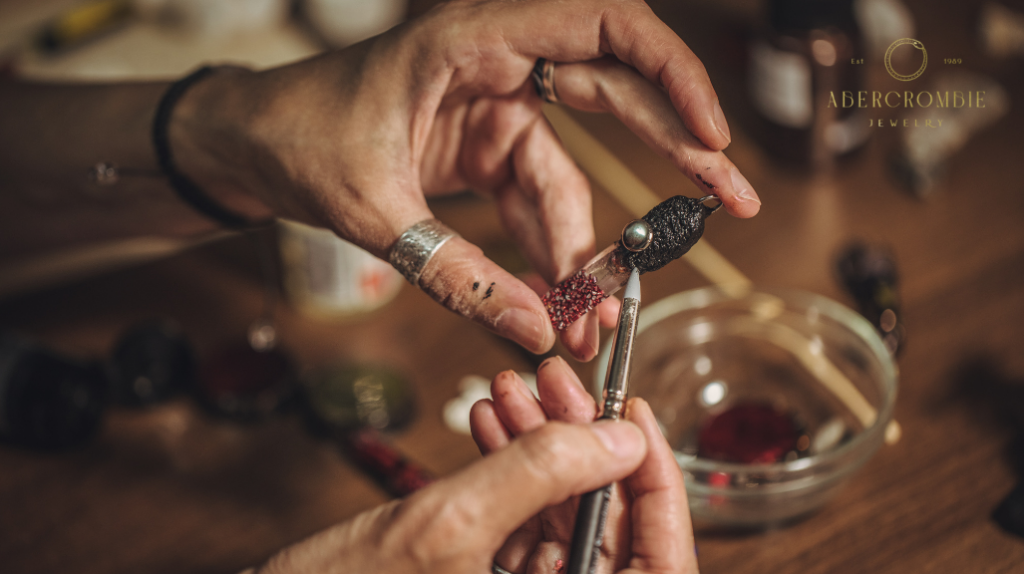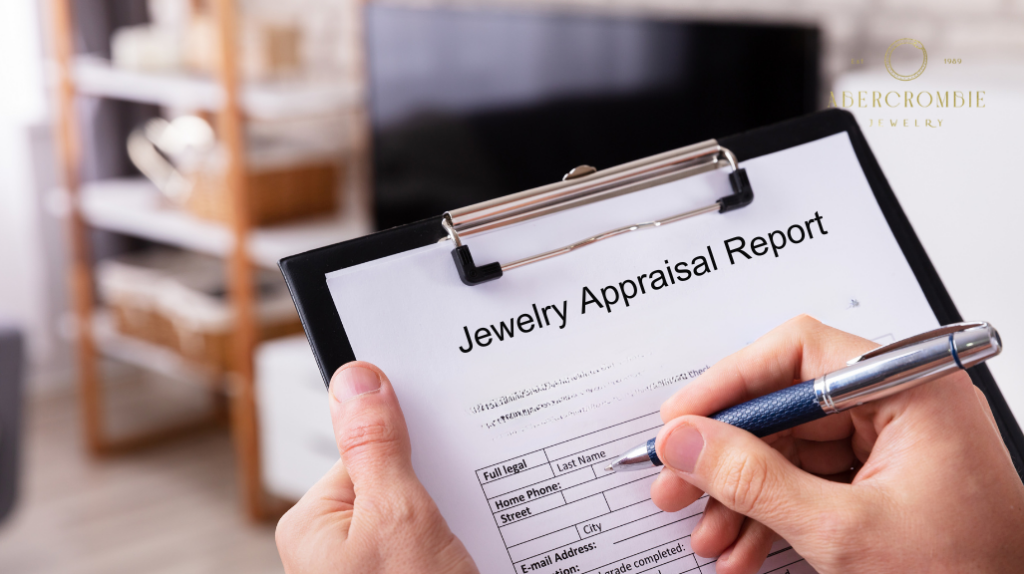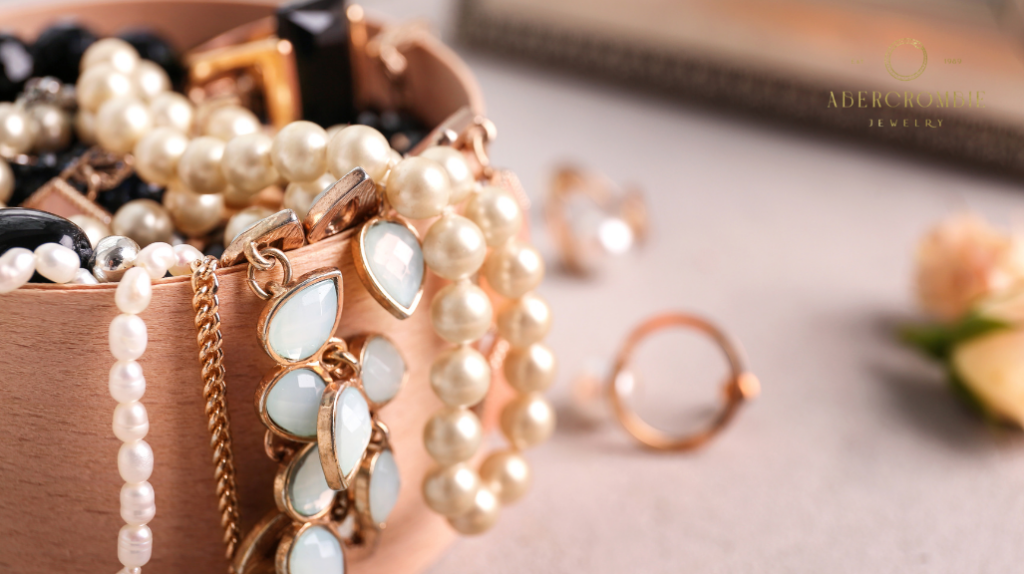- 1. Not verifying the appraiser's credentials
- 2. Failing to clean the jewelry before the appraisal
- 3. Overlooking the importance of a detailed appraisal report
- 4. Ignoring market value fluctuations
- 5. Not considering multiple appraisals
- 6. Forgetting to insure the jewelry post-appraisal
- 7. Neglecting to update the appraisal over time
- Frequently Asked Questions
Estate jewelry appraisal often lives in the shadow of more modern jewelry valuations, yet it holds a unique charm with its rich history and intricate craftsmanship. This distinct appeal sets it apart in the diverse realm of jewelry, marking estate jewelry appraisal as a specialized field deserving of attention. The key aspects of estate jewelry appraisal include:
- Verifying the appraiser’s credentials.
- Cleaning the jewelry properly.
- Understanding the importance of a detailed appraisal report.
- Acknowledging market value fluctuations.
- Considering multiple appraisals.
- Ensuring the jewelry post-appraisal.
- Updating the appraisal over time.
Each element plays a vital role in ensuring the accuracy and reliability of the appraisal. Each aspect encompasses challenges, best practices, and nuances that can significantly impact the appraisal’s outcome. From choosing a certified appraiser with experience in estate jewelry to understanding how global market trends affect valuation, this guide will explore these critical points in detail.
By providing a comprehensive overview, we aim to offer a clearer understanding of the estate jewelry appraisal process, empowering owners with the knowledge to navigate this complex field successfully.
1. Not verifying the appraiser’s credentials

One of the most critical mistakes to avoid in the estate jewelry appraisal process is not verifying the appraiser’s credentials. The choice between certified and non-certified appraisers can drastically influence the accuracy and reliability of the appraisal. Certified appraisers with specific experience in estate jewelry offer an invaluable level of expertise necessary for precisely evaluating antique or vintage pieces.
Failing to confirm these qualifications can lead to inaccurate valuations, negatively affecting insurance coverage, resale value, and the overall understanding of the piece’s genuine worth. It’s paramount to ensure that the appraiser’s credentials and experience are well-suited for the intricate requirements of estate jewelry appraisal, securing a trustworthy and exact assessment.
Certified vs. non-certified appraisers
The choice between certified and non-certified appraisers is pivotal in the estate jewelry appraisal process. Certified appraisers guarantee quality, having completed extensive training and examinations to align with industry standards. This certification ensures they possess the necessary skills for precise jewelry evaluation.
Conversely, non-certified appraisers lack this formal education and adherence to industry benchmarks, leading to less dependable evaluations.
Experience in estate jewelry specifically
Experience in estate jewelry is paramount. Appraisers specializing in antique and vintage jewelry bring a depth of understanding and appreciation for these pieces’ unique attributes and historical context. This specialized expertise is crucial for an appraisal that accurately reflects the tangible and intangible value of estate jewelry, ensuring a comprehensive assessment of its worth.
2. Failing to clean the jewelry before the appraisal

One often overlooked aspect that can significantly influence the appraisal process is failing to clean the jewelry before appraisal. Dirt and grime can mask critical details, such as unique features or imperfections, leading to an appraisal that does not accurately reflect the piece’s actual condition and value. Whether through a professional cleaning service or at-home cleaning methods, ensuring the jewelry is in its best condition is crucial.
A clean piece allows for a more detailed examination, revealing the craftsmanship, materials, and any distinctive characteristics contributing to its overall worth.
Dirt can hide flaws or features
The accumulation of dirt on estate jewelry is more than just an aesthetic issue; it can significantly obscure essential details such as flaws and features, leading to an inaccurate appraisal. Even the slightest layer of grime can conceal critical elements that play a crucial role in determining the piece’s condition, craftsmanship, and, consequently, its overall value. A thorough cleaning ensures these essential aspects are apparent, allowing for a precise and accurate assessment.
Cleaning methods: professional vs. at-home
Choosing between professional and at-home cleaning methods is crucial for the care and preservation of estate jewelry before appraisal. Professional cleaning offers a deep and safe cleaning by experts equipped with the right tools and knowledge to handle valuable and delicate pieces, minimizing the risk of damage. On the other hand, at-home cleaning provides a more immediate and accessible option, though it requires careful execution to ensure the jewelry is not harmed.
Both approaches aim to enhance the jewelry’s appearance and reveal its proper condition and features for a comprehensive evaluation.
3. Overlooking the importance of a detailed appraisal report

Neglecting the significance of a detailed appraisal report is a considerable oversight in the estate jewelry appraisal journey. This document is pivotal, providing an exhaustive account of the jewelry’s features, including descriptions, measurements, and grades. It is not just a formality; it’s a critical tool for insurance purposes, ensuring the piece is appropriately valued and protected.
Moreover, it acts as a key asset for resale, giving potential buyers a transparent insight into the item’s value. Beyond practicality, a detailed report preserves the piece’s historical legacy, maintaining its story and significance for future generations. Failing to secure such a report can lead to significant difficulties in validating the jewelry’s value and authenticity, adversely affecting its insurance and marketability.
The report should include descriptions, measurements, and grades
A thorough appraisal report is crucial, detailing descriptions, measurements, and grades for the estate jewelry. These components offer a comprehensive view of the piece’s physical characteristics, craftsmanship, and condition. Descriptions illuminate the item’s design and historical significance, measurements provide exact dimensions and weight, and grades evaluate the materials and gemstone quality.
This information establishes a solid basis for accurately assessing the jewelry’s value.
Importance of insurance and resale
The detailed insights provided by an appraisal report hold immense value for insurance and resale. For insurance purposes, the report guarantees that the jewelry is valued correctly, ensuring proper coverage for loss, theft, or damage. In the resale market, this document verifies the piece’s authenticity and worth, enhancing its appeal to prospective buyers.
This transparency and depth of information can significantly increase the jewelry’s marketability, facilitating a fair and beneficial sale for all parties involved.
4. Ignoring market value fluctuations

Failing to account for market value fluctuations can lead to a significant misjudgment in the appraised value of estate jewelry. Jewelry valuation is dynamic, swayed by global and local market trends that can fluctuate due to various factors such as economic shifts, changes in fashion, and the scarcity of materials. Overlooking these changes can result in appraisals that either undervalue or overvalue the piece, impacting its insurance coverage and resale potential.
Distinguishing between the piece’s historical value and its current market value is crucial to ensuring a realistic and equitable appraisal. Staying informed about current market conditions is essential for an appraisal that accurately reflects the jewelry’s true value in today’s market.
Influence of global and local market trends
Global and local market trends deeply impact the value of estate jewelry. These fluctuations can arise from many factors, including shifts in the economy, evolving consumer tastes, and the rarity of materials. For example, a global surge in popularity for a specific gemstone can significantly increase the value of jewelry containing that stone, whereas economic downturns might depress overall market values.
Recognizing and understanding these trends is vital for an appraisal accurately reflecting the jewelry’s worth in the contemporary marketplace.
Next: How And Where To Sell Your Gold?
Historical value vs. current market value
For a precise appraisal, it’s critical to differentiate between the historical and current market value of estate jewelry. Historical value encompasses the item’s origin, age, and any significance tied to its past, which might not always correlate with its value in today’s market. Current market value, conversely, is influenced by current demand, material availability, and prevailing market conditions.
A piece with a storied history or from a celebrated era may not necessarily command a higher price if current trends do not favor its characteristics. A balanced consideration of historical and current market values ensures a well-rounded and equitable assessment of the jewelry’s worth.
5. Not considering multiple appraisals

Neglecting the advantage of securing multiple appraisals for estate jewelry can lead to an appraisal that only partially captures the piece’s value. Different appraisers come with their expertise and methodologies, which can yield diverse valuations for the same item. By obtaining and comparing these various assessments, owners can achieve a deeper, more rounded understanding of their jewelry’s true worth.
This process not only aids in verifying the valuation’s precision but also sheds light on the different aspects various experts deem essential. Ignoring the opportunity to seek multiple opinions can result in overlooking a more detailed and accurate evaluation of the jewelry’s value, which is crucial for informed decision-making regarding insurance, resale, or estate distribution.
Variances in appraisers’ expertise and methods
Appraisers’ expertise and methods can significantly differ, influencing the final appraisal of estate jewelry. Each appraiser brings a distinct set of skills and perspectives shaped by their background, experience, and valuation techniques. These differences can stem from their specialized knowledge of particular jewelry types, the appraisal methodologies they favor, and their interpretation of current market conditions.
Acknowledging these variances is crucial for understanding the value of obtaining appraisals from multiple sources to ensure a well-rounded evaluation of the jewelry’s worth.
Comparing appraisal values for accuracy
Comparing appraisal values from various professionals is a critical step toward confirming the accuracy of an estate jewelry valuation. This comparative analysis helps owners spot discrepancies among the appraisals and discover the reasons behind the divergent values. Through this examination, jewelry owners can better understand their item’s market value, which is indispensable for making informed decisions regarding insurance, resale, or estate management.
This approach highlights the importance of multiple appraisals in determining the jewelry’s true value fairly and accurately.
6. Forgetting to insure the jewelry post-appraisal

You need to pay more attention to the essential step of ensuring estate jewelry after an appraisal, which can expose owners to substantial financial risks. Tailored based on the appraisal’s detailed findings, insurance is crucial for safeguarding against potential loss, theft, or damage. The decision between opting for replacement value or actual cash value coverage is critical in defining the scope of protection provided.
Without adequate insurance, the owner might incur significant expenses to repair or replace a cherished piece. Promptly securing insurance post-appraisal protects the financial investment in the jewelry and offers peace of mind, ensuring the item’s value is shielded against unexpected events.
Replacement value vs. actual cash value coverage
Choosing between replacement value and actual cash value coverage is critical when insuring estate jewelry. Replacement value coverage compensates the owner for replacing the item with a similar piece, disregarding depreciation. On the other hand, actual cash value coverage considers depreciation, reimbursing the item’s value at the time of loss.
This distinction profoundly affects the level of protection and the owner’s potential expenses in case of a claim, highlighting the importance of aligning the insurance choice with the jewelry’s appraisal and the owner’s specific needs.
Periodic reevaluation for insurance adjustments
Ensuring that estate jewelry remains adequately insured over time necessitates periodic reevaluation of its value. Changes in market dynamics, fluctuations in material costs, and alterations in the item’s condition can all influence its appraised value. Regularly updating the jewelry’s valuation and adjusting the insurance coverage to match its current market value is essential to avoid underinsurance.
This proactive stance allows for insurance protection that accurately reflects the piece’s worth, offering comprehensive coverage against potential losses or damages.
7. Neglecting to update the appraisal over time

Overlooking the need to update the estate jewelry appraisal periodically can lead to a significant gap between the item’s insured value and actual market worth. As market conditions evolve, affecting the value of materials and the popularity of specific styles, the jewelry’s valuation may shift upwards or downwards. With timely updates, owners may avoid becoming overinsured, paying for higher premiums than necessary, or underinsured, facing inadequate coverage in case of loss or damage.
It’s imperative to reevaluate the jewelry’s worth at recommended intervals to ensure that insurance coverage accurately mirrors its market value. This proactive approach safeguards the financial investment in the piece and ensures that the insurance protection remains relevant.
Market changes affecting value
Market changes significantly impact the valuation of estate jewelry. Variations in the prices of precious metals, evolving fashion trends, and shifts in consumer preferences can all alter a piece’s appraised value. As the market landscape changes, jewelry pieces’ worth can rise or fall.
Recognizing these fluctuations and grasping their implications is vital for keeping the appraisal of the jewelry aligned with its actual market value.
Recommended frequency for appraisal updates
Regular appraisal updates are advised to ensure that estate jewelry appraisals remain accurate and in line with market fluctuations. Experts typically recommend revisiting appraisals every two to five years, though this can vary based on the jewelry’s nature and the volatility of its market. These periodic reevaluations ensure the insured value remains congruent with the current market, safeguarding against overpayment on insurance for an overvalued piece or the risks associated with underinsurance for an undervalued item.

